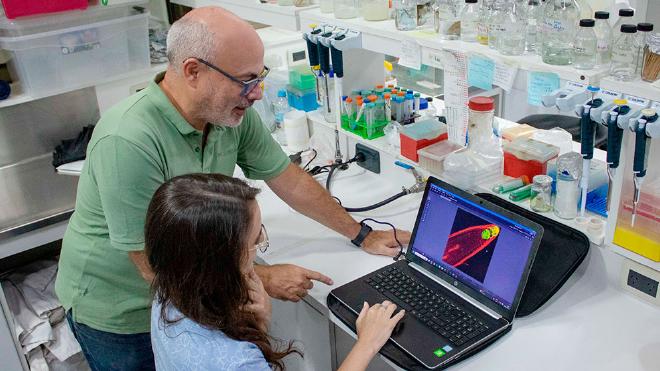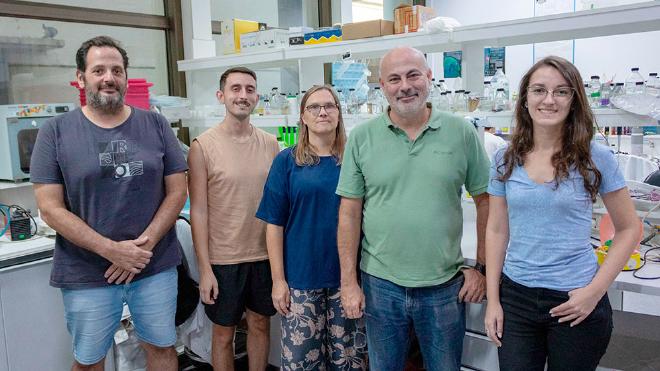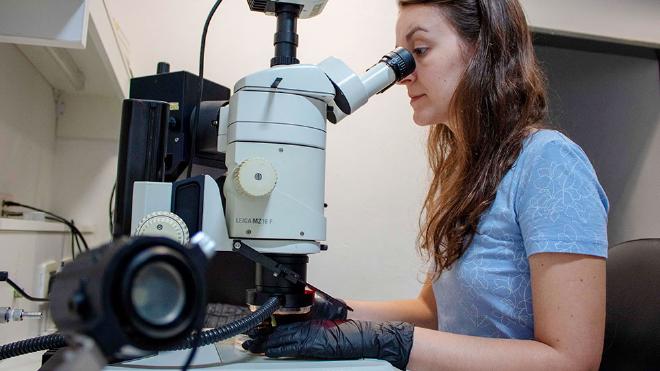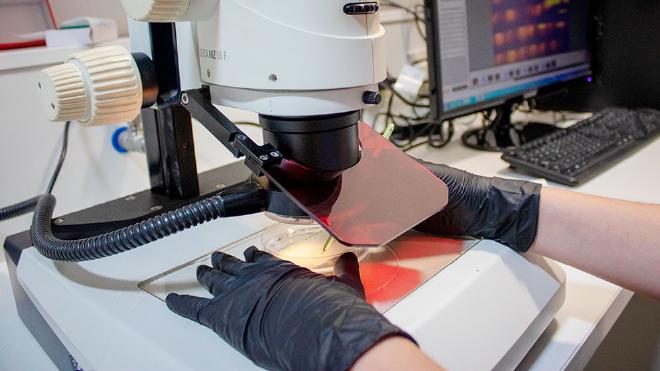

A recent publication in Nature Plants reveals a new contribution from the research group led by CONICET researcher Javier Palatnik at the Institute of Molecular and Cellular Biology of Rosario (IBR, CONICET – UNR) to the understanding of the regeneration process in plants. The importance of these discoveries was highlighted in the journal News & Views section, as the capacity for regeneration is one of the greatest limitations for plant improvement through gene editing techniques.

Through a precise experimental design and the combination of sophisticated biochemical techniques and fluorescence microscopy, they were able to establish the molecular mechanism that regulates and defines root regeneration when damaged. The work, carried out entirely in Arabidopsis thaliana (a model species for research in plant biology), would allow for the development of agbiotechnological tools to obtain complete plants from just a few cells.
“Currently, the specific and targeted modification of genes in plants is accessible and relatively easy to do. The problem arises later when, from those initial cells that carry the introduced and desired characteristics, one wants to obtain a whole plant that is fertile in order to propagate it, because many of the species or varieties of crops with agronomic value are very difficult to regenerate. Then, there is a great interest from leading companies in agrobiotechnology to develop new tools that facilitate regeneration to support gene editing processes in plants of agronomic interest,” said Palatnik, director of the RNA Biology and Cellular Programming laboratory at the IBR.

Based on the studies conducted, Palatnik and his team deciphered that the fundamental aspects of regeneration in roots are defined by a system of two molecular components that precisely control where and in what quantity many of the genes involved in cell growth, division, and differentiation are expressed. On one hand, a family of proteins called growth-regulating factors (GRFs) that regulate the expression of genes linked to development in leaves, stems, and roots. The other component is a microRNA (called miR396): a small single-stranded nucleic acid molecule that operates on the GRFs, determining their presence and abundance.
“We were the first in the world to study this system; we started in 2005 with funding for basic science projects. However, the knowledge we generated led us to the creation of three recognized patents granted in countries with strong technological development such as the United States and China, which were transferred to the private sector and are now at different stages of application,” said Palatnik. In an initial patent, the researchers demonstrated that the GRF system could be used to increase plant biomass and enhance drought tolerance. This was followed by a synthetic biology patent where they designed a chimeric protein that fuses a GRF with a protein that enhances its growth-promoting effect (GRF-GIF chimera). The most recent patent, in collaboration with the University of California, Davis, establishes the effect of this chimera as a stimulator of regeneration in plants, based on successful tests with wheat plants.
However, the chimera is not a universal stimulant. According to Palatnik: “It needs to be improved and understood in detail how it works in order to develop more effective versions in different species. This would pave the way for an agrobiotechnological version of these chimeras to make them more powerful and universal.”
A Journey to the roots interior" #
Being able to overcome this limitation was a great motivation for the research group, which after almost 1000 hours of work under the fluorescence microscope and months of experiments with cutting-edge equipment at the University of Heidelberg in Germany, managed to determine that the interaction of micro RNA with GRFs regulates where and how cells divide after the amputation of the root tip, determining the speed and efficiency of root regeneration. “This system is active under normal conditions and helps to define the structure of the root,” said Julia Baulies, a postdoctoral fellow at CONICET and the works’s first author. The ability of a root to continuously grow in length is due to the presence of a structure at the tip called the quiescent center, which is made up of stem cells that divide very slowly. “Micro RNA 396 is expressed in this area and keeps the GRFs excluded. This establishes a balance between a generative zone formed by cells that proliferate a little, and the proliferation zone, where cells divides a lot. When the root is damaged, that balance has to be reestablished during regeneration,” she explained.

**To study this process in detail, they made precise cuts at the tip of the root and analyzed how genes are activated in individual cells once the injury occurs. The Arabidopsis roots are transparent and small, measuring just one-tenth of a millimeter. On one hand, this means an advantage that allowed for the marking and tracking by microscopy of different genes with fluorescent colors, and on the other hand, it required very specific methodological skills to handle the sample, make precise cuts, and interpret the results. “It was an exciting job that required a lot of preparation; going down to the cellular level allowed us to understand what is happening and what role plays each cell in the cellular diversity of the root,” expressed Baulies. “When you start putting together the puzzle with the information and realize that you are observing something that no one has ever seen before, it is very exciting.”
The authors determined that after cutting the tip of a root, two types of structures can be observed in the regeneration process: one called “closed state,” where stem cells cluster in a defined niche, which is what is observed in a normal root, and another called “open state,” where stem cells remain dispersed.
If the activity of the GRF genes increases, the roots reach the normal ‘closed state’ more quickly. On the other hand, if these genes have less activity, the roots remain in an ‘open state’, but this does not prevent them from continuing to grow. “This is something that had not been described until now, the fact that the root doesn’t reconstruct the original structure during regeneration and continues to grow thanks to the activity of dispersed stem cells,” concluded Palatnik.
Citation #
- The paper MicroRNA control of stem cell reconstitution and growth in root regeneration, was published in Nat. Plants (2025). https://doi.org/10.1038/s41477-025-01922-0. Authors: J. L. Baulies, R. E. Rodríguez, F. E. Lazzara, D. Liebsch, X. Zhao, J. Zeng, L. Bald, C. Schommer, J. U. Lohmann & J. F. Palatnik.
- Acknowledgements and Funding: The researchers thank M. Bennet, C. Gutiérrez, B. Scheres, J. H. Kim and N. Han for providing seeds; S. Gornik for support with computational analyses; R. Vena for help with confocal image acquisition and analysis; D. Aguirre and K. Piiper for help with plant care; and members of our group for input on our work. J.L.B., F.E.L. and D.L. were supported by fellowships from CONICET, and J.F.P., R.E.R. and C.S. are members of the same institution. This research is supported by grants from Agencia I+D+i (Argentina, PICT-StartUp-2019-0000-2, PICT-2021-I-A-00513), CONICET (PUE 086), SF DTT-2023-072 and ICGEB (CRP/ARG17-01) and a Humboldt award to J.F.P., and the ERC synergy grant no. 810296 ‘DECODE’ to J.U.L.
Commentary on the article in the News & Views section of Nature Plants #
-
Hu, Z., Han, H., & Wang, G. A microRNA defines root regeneration. Nat. Plants (2025). https://doi.org/10.1038/s41477-025-01928-8
-
The article Descifran nuevos secretos sobre la regeneración de las plantas, written by Elizabeth Karayekov – from Área de Comunicación IBR (CONICET-UNR), was published in the CONICET website. ¡Many thanks Elizabeth!

